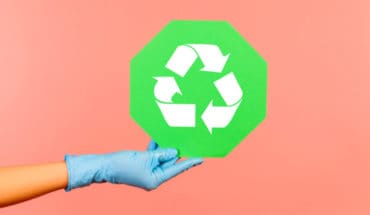We could be just years away from eliminating trachoma, one of the world’s oldest diseases, says Dr Caroline Harper CBE, CEO of Sightsavers.
‘Last week I stood in front of hundreds of entrepreneurs, tech visionaries and creative thinkers at TED2018 with a pair of tweezers hanging from a chain around my neck. I was in Vancouver to talk about trachoma, the world’s biggest infectious cause of blindness, and how we could be just years away from eliminating it. I was wearing tweezers because after years of repeated trachoma infections with no treatment, scar tissue forms under the person’s eyelid inverting the eyelashes so they painfully rub against the cornea until they become blind in the most painful way imaginable. Girls in Africa wear tweezers to pull out their eyelashes for temporary relief but they grow back more vicious than before.
Trachoma has been recorded as far back as ancient Egypt. Right now more than 182 million people are at risk of going blind from the eye disease, which blights the world’s poorest communities.
Trachoma has been recorded as far back as ancient Egypt. Right now more than 182 million people are at risk of going blind from the eye disease, which blights the world’s poorest communities.
Despite being entirely preventable and treatable, trachoma still damages children’s ability to learn and people’s employment prospects. It traps whole communities in a cycle of poverty.
But thanks to one of the most successful collaborative alliances in the history of global health, momentum to eliminate trachoma is gathering pace. In 2012 Oman became the first country the World Health Organization (WHO) validated as having eliminated trachoma as a public health problem. In 2016 Morocco announced the end of the disease, and in 2017 Mexico, Cambodia and Laos became trachoma free. As I write, six other countries are believed to be close to elimination.
One of these six, Ghana, is on the cusp of making history as the first sub Saharan African country, and indeed the first Commonwealth country, set to receive the WHO validation that will officially declare elimination of the disease.
The progress that has been made in recent years shows that trachoma elimination is possible. This has been achieved through close collaboration between health, communities, INGOs such as Sightsavers and other members of the International Coalition for Trachoma Control, working together under one common strategy: the WHO-endorsed SAFE strategy. SAFE stands for surgery, antibiotics, face washing and environmental improvement, and we know that it works. To eliminate trachoma globally we need every country where trachoma is a public health problem to have the resources to deliver the SAFE strategy right until the end.
SAFE stands for surgery, antibiotics, face washing and environmental improvement, and we know that it works. To eliminate trachoma globally we need every country where trachoma is a public health problem to have the resources to deliver the SAFE strategy right until the end.
High-quality data also has an essential role to play in bringing about the end of trachoma. The Tropical Data service supports national health ministries to collect accurate and high-quality data on where programmes have been a success and where further activities are required. Through the Tropical Data initiative, teams in the field use smartphone technology to enable them to collect and transmit data more quickly, meaning results can be analysed and applied faster by health ministries. This means field teams in even the most remote and difficult environments can conduct good quality surveys.
At TED2018 we revealed one of the most exciting recent developments in the quest to eliminate trachoma: The Audacious Project. Hosted by TED, and supported by leading non-profit organisations and philanthropists. The Audacious Project has chosen trachoma elimination as one of the Audacious ideas because it recognises that those working in to end trachoma are now in a position to bring about this momentous global change. The only thing holding many countries back is having the resources to end the disease.
Straight after TED, a second, massive step along the path to trachoma elimination came to the fore as UK aid announced a new £20 million funding commitment to boost elimination efforts in ten Commonwealth countries by 2020. The new Commonwealth 2018-2020 fund will be coordinated by Sightsavers in Africa and the Fred Hollows Foundation in Asia and the Pacific, in close collaboration with ministries of health, local communities and other members of the International Coalition for Trachoma Control.
With the help of both projects as well as the continued work of partners across the world, countries that are on the verge of eliminating trachoma will have the resources to finally consign it to history. We will then be very close to eliminating trachoma.
To be able to finally rid the world of trachoma will be one of the greatest achievements in human health. A future in which no one suffers or goes needlessly blind because of trachoma is now on the horizon – in this world, all necklaces will be worn for pleasure, not to ease pain.’
- Eliminating the vicious eye disease, trachoma - 19th April 2018






